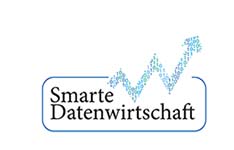SENSE
Semantic, interoperable smart home
Application industry: Smart home/smart living
Technology area: Machine learning; semantic technologies
SENSE explores concepts and applications for smart homes. The project aims to facilitate interaction (interoperability) of digital devices and systems in connected buildings through semantic description models.
The baseline
In smart homes, also known as smart buildings, digital systems and devices are interconnected in such a way that they make life more comfortable, safer, and more cost-efficient. A smart, interconnected weather station, for example, registers persistent drought and consequently triggers the garden watering system. Or, when residents leave home, the lights go out automatically, blinds and heating are lowered, and the energy consumption is reduced. Such services are possible because domestic installations and household appliances are increasingly equipped with digital technology. However, for the individual components to work together, various technologies need to understand each other. Key goals of SENSE are to make this communication more flexible and preparing data and function descriptions for future requirements through the use of artificial intelligence.
The project goal
The SENSE project is researching concepts for interoperability, i.e. better interaction between digital devices and systems in the connected building. One main component to this is the semantic description of technical interfaces, meaning a description according to content criteria. Semantic interoperability is intended to facilitate communication between digital devices and systems. As well as creating a connection to overarching digital structures, such as smart energy networks (smart grid) or the interconnected city (smart cities) without jeopardising the interests of users worthy of protection. SENSE only uses internationally established (web) standards, such as the Web of Things (WoT) concept, and enables new digital applications in connected buildings right through to systems, such as individualized smart assistance services that use artificial intelligence for smart operations. The establishment of the open Semantic Building Lab is an essential part of this project. The lab environment provides space for practical, pre-competitive work on various aspects of interoperability in associated projects and expert teams.
Application and practical benefit
SENSE is determined to lay the foundation for connected buildings and the services emerging around them to become more widely established. Practical work initially covers four areas of application, i.e. energy, comfort, safety, and assistance. To this end, lab research is underway on fundamental topics, starting with adapted data models, semantic description, and the interaction of the different system worlds in shared services right through to questions of data abstraction and data protection.
Term: 1 January 2019 to 31 December 2021
Consortium: DFKI GmbH (lead member), IoT Connctd, FH Dortmund, ZVEI-FE
Contact:
Dr. Hilko Hoffmann
German Research Center for Artificial Intelligence (DFKI) GmbH
E-Mail: Hilko.Hoffmann@dfki.de
Website: www.projekt-sense.de
- Recommend this page:
- Print view
